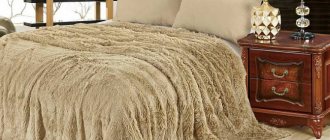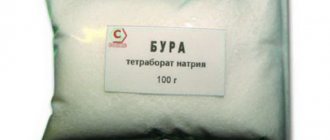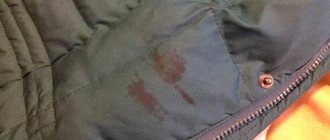Home>ArticlesHow to wash a grass blanket so that it always looks like new
← To the list of articles
- Previous article
- Next article
October 8, 2022
Blankets are made from:
- Wool;
- Natural and artificial fur;
- Cotton;
- Bamboo;
- Acrylic;
- Microfiber.
One of the most common materials for making bedspreads is velsoft, a 100% artificial material. It is very soft and fluffy; people call it “grass” for its lint. But this same material is also the most difficult to care for.
Here you can do two things: try to wash it at home or take it to the dry cleaner.
What types of blankets are there?
WHAT ARE THERE ARE BLANDS.
- Homemade. They are mini blankets or bedspreads. ...
- Road. Travel blankets are simply indispensable when traveling. ...
- For picnics. Picnic blankets are an indispensable attribute of a comfortable outdoor recreation. ...
- Microfiber. ...
- Flannel. ...
- Acrylic. ...
- Knitted blanket. ...
- Cotton.
Interesting materials:
How to block calls from an unknown number? How to block calls from hidden Xiaomi numbers? How to log into Olkh by phone number? How to color in numbers on a photo on an iPhone? How to close number a1? How to register an Altel number? How to register Skype without a phone number? How to register on Facebook without a phone number? How to register for Gmail without a phone number? How to register in Viber without a phone number?
Before washing
To understand what exactly to do, look at the label on the item. It contains all the information: at what degrees is machine washing possible, or is it not possible at all. The recommendations must be followed, otherwise the item will be damaged.
If dry cleaning is recommended, you just need to fold it and take it away, but if it can be washed, you don’t need to start by putting it in the drum of the machine. Perhaps you can not wash it at all?
If the blanket still looks fresh and less than six months have passed since the last wash, but the smell of cake has already appeared, you can simply dry it well and get rid of the dust the old way - beat it out with a special beater.
If there is no smell, but there are stains, you can also not wash the entire blanket, but simply remove the stain. Vinegar or lemon juice mixed with soda can help with mild stains; carpet cleaner can help with heavy stains. Old stains can be removed by dry cleaning.
Why did this happen to her?
As they say in melodramas, there were no signs of trouble. And suddenly, after washing, your favorite blouse shrinks and fits on your body with difficulty.
How to stretch a shrunken woolen item after washing? There are several ways to restore knitted clothes to their original size, but before you take action, it’s worth understanding why this happened to it:
- First of all, you need to know that you shouldn’t wash wool knitted items in a washing machine, even if you set it to the “delicate wash” mode. The wool felting effect will inevitably occur. For this, ideal conditions have been created in the washing machine - a temperature difference and the items rolling over the walls of the drum;
- Even when washing by hand, it is unacceptable for the water temperature to be above 30°C. It would be nice to have a special washing powder that does not deform the knitted fabric;
Hand washing woolen items
- It is best to dry by wrapping the product in a terry towel. Moreover, if you carefully lay out and straighten all the folds before folding, you don’t need to iron them later. The towel will absorb all the moisture, and then the item will dry in the air;
- There is no need to clamp the knitted product with clothespins; it is better to hang it on hangers so that the correct shape is maintained and it does not stretch to the sides;
- Ironing is possible in exceptional cases. Steaming through moistened gauze with the appropriate temperature setting on the iron is acceptable, but not advisable;
- Do not dry knitted items on heating appliances.
It is better not to wash woolen items in the washing machine.
If you follow all these rules, then you won’t have to bother with resuscitating the damaged item.
Cotton and linen blankets
In summer and spring, blankets made of cotton and linen are especially in demand. Natural materials do not require special care, but failure to properly clean them can cause the product to fade or shrink in size.
Cotton and linen bedspreads are washed in machine mode at a water temperature of +40°C, setting the switch to “Cotton”. It is better to wring out at low speeds, otherwise strong creases will form on the fabric that are difficult to smooth out with an iron.
To wash white blankets, you can use powder with oxygen bleach. Products with bright colorful colors are best washed with enzyme powder.
Large fluffy blankets are easiest to take to the dry cleaner, where they will get them in order for a reasonable amount. If this is not possible, then you can wash the product at home. The main thing is to determine exactly what material the product is made of and follow the recommendations of specialists.
Tip 5
Do not overdry the terry. Severe dryness causes it to lose its softness. It is better to remove the products a little wet and dry them indoors while lying down.
And also, do not iron the terry under any circumstances. Remember the negative effects of high temperatures on it. In addition, the steel sole of the iron additionally crushes lint.
How to restore fluffiness to things?
If a knitted item shrinks slightly during washing, you can return it to its original shape: steam it through a damp cloth, stretching it a little. Knitted items will remain soft and fluffy if after washing you rinse them in warm water, adding glycerin to it at the rate of 1 tsp.
Interesting materials:
What is the difference between quail meat and chicken? What is the difference between middle market and mass market? What is the difference between a mini pig and a micro pig? What is the difference between the minimum score and the passing score? What is the difference between micellar water and milk? What is the difference between ground coffee and granulated coffee? How do sea bays and straits differ from each other? What is the difference between Moscow and St. Petersburg pronunciation? What is the difference between a bridge and a repeater? What is the difference between different types of flour?
Kinds
Traditionally, a blanket is a thin fringed blanket that can be woven from natural (wool, cotton, linen, bamboo) or synthetic fibers, as well as threads with countless variations in the percentage of each. The temperature regime, resistance to chemicals, and tendency to deform during spinning depend on the composition.
Natural materials are more demanding in terms of washing conditions: they will not tolerate water hotter than 30°C, and do not tolerate spinning above 600 rpm. But cleaning with solvents, on the contrary, is more successful.
When asked whether this blanket can be washed in an automatic washing machine, only the label with the corresponding pictogram will answer.
Plaid
Three steps to softening old bedspreads
She makes this solution from ordinary sodium bicarbonate, commonly known as baking soda, vinegar and any liquid detergent that is on hand.
No, you don't need to mix anything! She does this:
- Half a glass of soda is poured directly into the drum onto blankets and bedspreads.
- Half a glass of detergent is poured into the dispenser instead of powder.
- She pours half a glass of vinegar into the second powder drawer.
Washing blankets with long pile
Home textiles and clothing made from velsoft have gained the undeserved reputation of “things before the first wash.” Housewives complain that, even if the recommended modes and temperatures are observed, when they load a beautiful thing, they end up with something matted and terrible.
It's time to fix it! You can even wash it in a washing machine, the main thing is to know what to do. We share secrets and tips.
Before washing:
- We try to tear out a piece in an inconspicuous place. If it works, it’s better not to wash it; the washing machine filter may become clogged and will have to be cleaned.
- We put the blanket in the washing machine. If the item takes up more than ¾ of the drum size, the cover will not stretch, and overload will negatively affect the operation of the machine.
We exclude powders immediately, only soft products, gels or liquids. If you wash by hand, you can use regular shampoo (you CANNOT add it to the machine, excess foam will not be good for you!).
The most gentle mode, 30 degrees, delicate wash mode.
You can add a tennis ball to the drum.
Spin – five hundred revolutions, no more, but it’s better to just drain the water.
Experts recommend drying it in a dryer, then the pile will be fine.
Hand washing proceeds according to the following scheme:
- Soaking in soapy water at a temperature not exceeding 30°C for half an hour;
- Gentle wash (squeeze a little, not three!);
- Rinse with mouthwash or vinegar.
Drying
Regardless of the chosen washing method, it is better to dry the bedspread flat, preferably not on one rope, but on several, to avoid creases. If the main component is wool, then it is optimal to dry it on a horizontal surface, since a product made from this material easily loses its shape and stretches.
Expert opinion
Irina. Housewife.
Ask a Question
It is better to dry in the fresh air, but should not be placed in direct sunlight, this will cause the colors to fade.
How to wash a fluffy rug?
Set the delicate cycle, for wool - the mode for washing woolen items, for synthetics - synthetic ones. Wash at temperatures up to 40 degrees without spinning and drying with double rinsing. For microfiber and synthetics, you can use water temperatures up to 60 degrees. After washing, do not wring out the mat or twist it.
Interesting materials:
How to select all files from folders at once? How do I allow file format changes? How to allow changing file type? How to edit Mac hosts file? How to compress a file into an archive? How to sync onedrive files? How to scan many pages into one TIFF file? How to scan multiple files into one? How to scan multiple pages into one Canon file? How to scan multiple pages into one Kyocera file?
Why did the terry towel become stiff?
The most common cause of stiffness is improper washing, drying and storage of towels. For such fabric, you need to choose gentle washing liquid compositions. Particles of washing powder do not wash well, clog the fibers of the fabric and worsen the properties of the material.
Washing in hot water, insufficient rinsing and high spin speeds, dry ironing with high heating of the iron also damages the fibers. The material is negatively affected by drying near electrical appliances, radiators and heaters, as well as boiling or boiling.
Poor-quality terry towels lose their softness and fluffiness after the first wash, sometimes fade and fade, becoming hard and unpleasant. Therefore, it is important to choose high-quality and durable products from a reliable and trusted manufacturer.
The hardness and poor quality of tap water is another reason why towels and other things become hard and fade, losing their attractive appearance and physical properties. Tap water contains various impurities, which, during the washing process, settle in the fibers of the material and deteriorate the quality of the latter.
In this case, it is recommended to use special detergents that soften the water. You can also soften and purify your tap water yourself. How to do this, see here. And then we’ll learn how to restore softness and fluffiness to terry towels.
Woolen blankets, capes and bedspreads
A wool blanket is a classic option. Warm, comfortable, durable, breathable. Sometimes, in order to refresh textiles made from natural wool, it is enough to air it for a while by hanging it outside or on the balcony. If the product is heavily soiled, it can be washed at home, although this is not an easy job. Despite the fact that many washing machines have a “Wool” mode, it is not advisable to use the machine. It is better to do a gentle hand wash.
First of all, you need to decide on a detergent. Experts advise using a special gel for washing woolen products. It washes clothes well in not too hot water and washes out well when rinsed. Instead of gel, you can use baby soap or regular hair shampoo. Soap is made into small shavings, which are thoroughly dissolved in water. The main thing is to achieve abundant foam. When rinsing the blanket, so that it remains soft and fluffy, add conditioner to the water.
We recommend: Wash your ski jacket like a pro before the start of the season
Hand washing a wool blanket is carried out as follows:
- fill a large container (basin or bath) with water whose temperature does not exceed 30°C;
- add detergent and whip up rich foam;
- soak the item for 15 minutes;
- wash with light progressive movements, then pulling out, then plunging back into the liquid;
- Rinse the item several times in cool water, adding conditioner during the last rinse.
In order not to damage the structure of the wool fiber, the product is not wrung out or twisted.
After washing, the blanket is removed from the water and laid out on a wire rack installed above the bathtub. When the water has drained, the product can be dried with a towel and then laid out to dry.
The drying area must be prepared in advance. A blanket is spread on the floor or a large table, on which the wet product is laid out. To prevent the blanket from warping and shrinking in size, it can be secured with pins around the perimeter.
Silk and cashmere products are also recommended to be washed only by hand, and not twisted or wrung out.
Subscriber reviews
This video about fluffy, soft blankets aroused serious interest on her profile. After all, few people will risk their washing machine and pour vinegar into it, and even with baking soda. But, as Liz herself claims, nothing should happen to the machine.
Someone approved and supported the mom from Instagram, promising to wash the blanket using her method at home, someone reacted with distrust and indignation, and Liz herself is confident in the effectiveness of this method. “I always use the home remedy, the machine is safe and sound, the bedspreads are like new, and the bed linen is fresh and pleasant to the touch. So, use it, because I won’t give bad advice to my subscribers,” Liz replied to all her commentators.
Found a violation? Report content
Tip 2
Strong cooling. Terry fabric responds very well to washing and rinsing in cold water. Low temperatures help make terry towels soft again after washing . You can additionally soak the product spun in the machine in a basin of very cold water for 10-15 minutes. Then squeeze and dry in a cool place.











